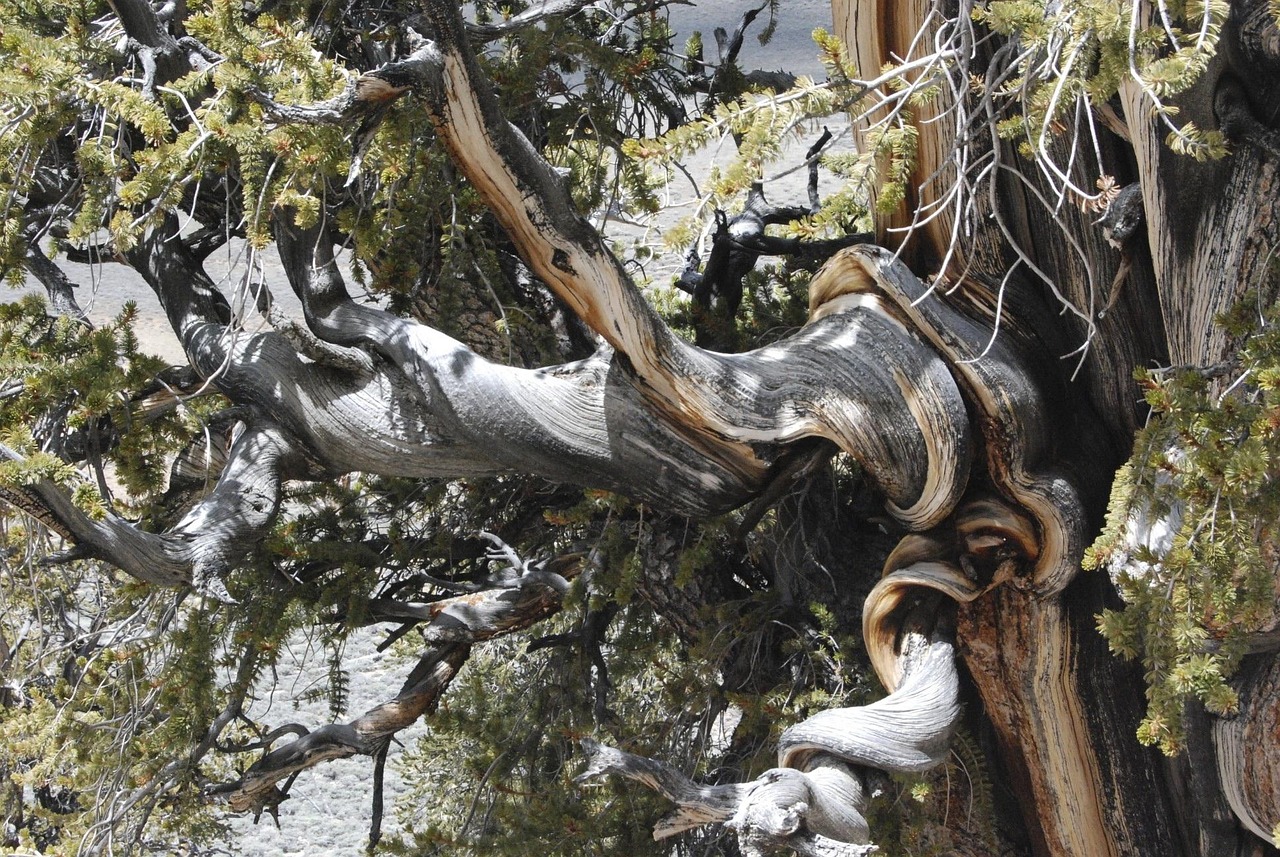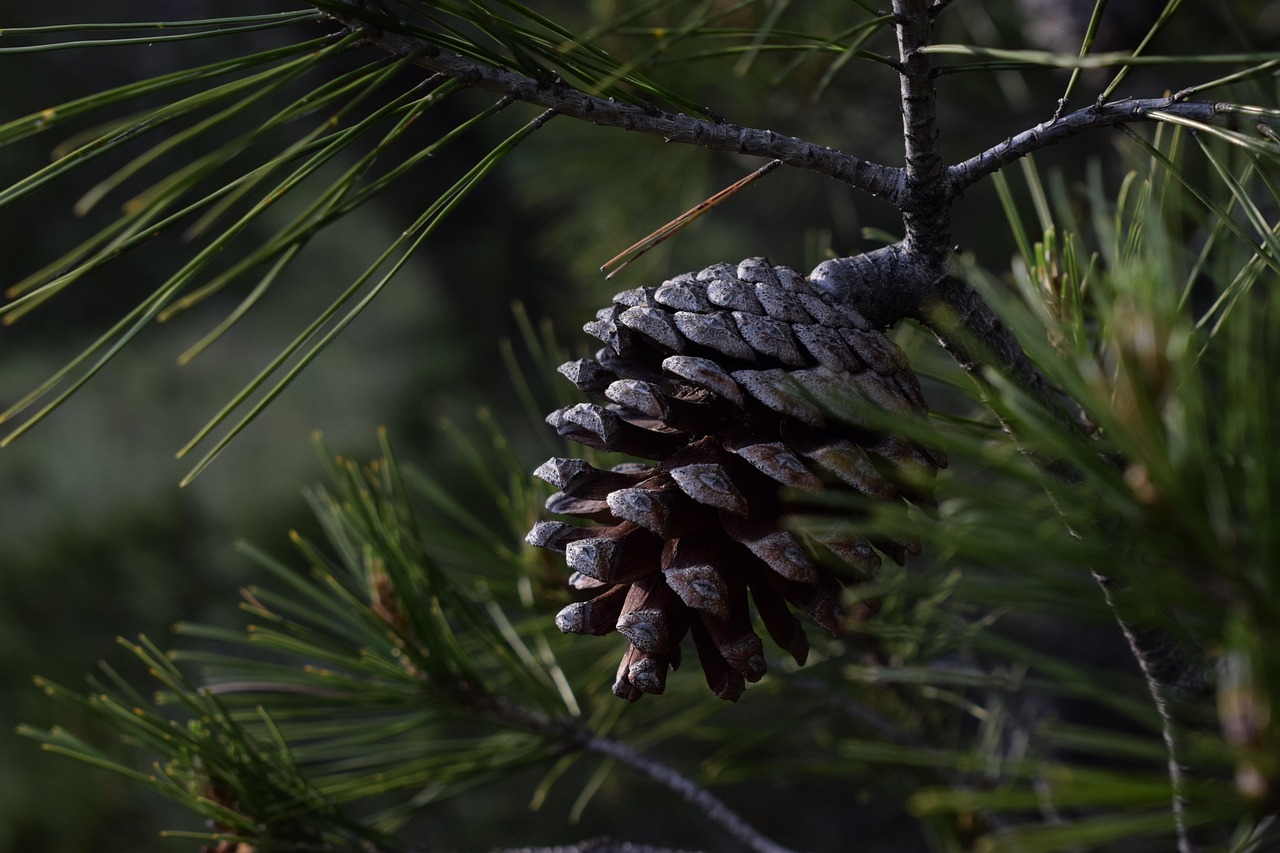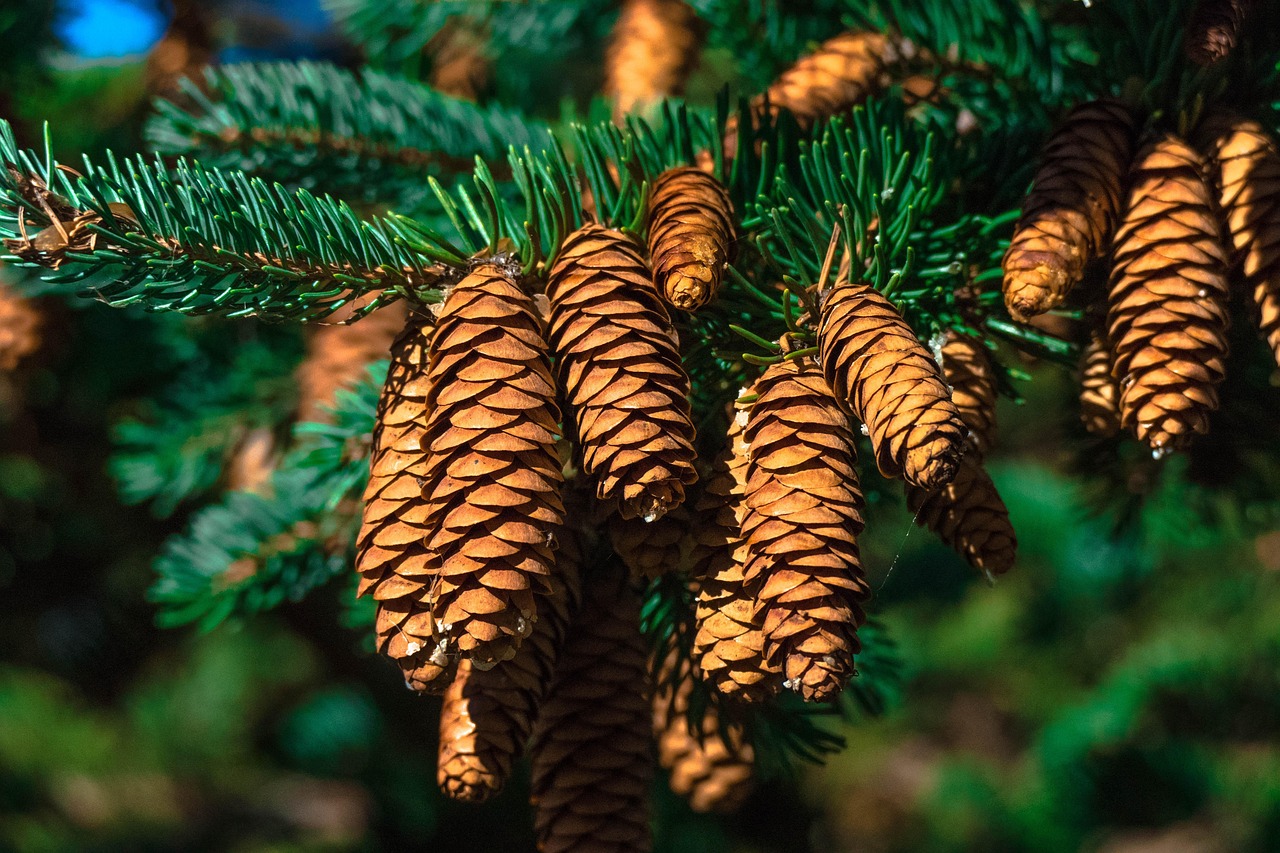Bristlecone pines are remarkable trees known for their incredible longevity and resilience. Some individuals have lived for over 5,000 years, making them among the oldest known living organisms on Earth. Their ability to thrive in harsh conditions adds to their mystique and importance in ecological studies.
Bristlecone Pines: A Glimpse into Their Existence
Bristlecone pines (Pinus longaeva) are native to the western United States, particularly found in the high mountain ranges of California, Nevada, and Utah. These trees thrive in some of the most inhospitable environments, often growing at elevations above 9,800 feet. The harsh climate includes strong winds, extreme temperatures, and limited soil nutrients, yet bristlecone pines continue to survive and grow.

Their unique adaptations to these challenging conditions contribute to their longevity. Bristlecone pines have a very slow growth rate and produce dense wood with a high resin content. This makes them resistant to pests and diseases that commonly affect other tree species. Additionally, their twisted trunks and gnarled branches create a striking appearance, capturing the attention of visitors and researchers alike.
One of the most famous groves of bristlecone pines is located in the White Mountains of California. This area is home to some of the oldest living trees on the planet. The “Methuselah Tree,” for example, has been dated to be over 4,800 years old. Researchers continue to study these ancient organisms to learn more about climate change, ecology, and the resilience of life.
Ecological Significance of Bristlecone Pines
Bristlecone pines play a crucial role in their ecosystems. They provide habitat for various wildlife species, including birds and small mammals. The trees also contribute to soil stability and help prevent erosion in their mountainous habitats.
Due to their age and the harsh environments in which they thrive, bristlecone pines are considered valuable indicators of climate change. Scientists can study tree rings from these ancient trees to gain insights into past climate conditions. This information is vital for understanding how ecosystems adapt to changing environments.
Key Characteristics of Bristlecone Pines
| Characteristic | Description |
|---|---|
| Age | Some trees exceed 5,000 years in age. |
| Height | Typically range from 15 to 50 feet tall. |
| Location | Found in the western United States, mainly in high elevations. |
| Wood Type | Dense and resinous, contributing to durability. |
Their unique characteristics not only fascinate scientists but also attract tourists and nature enthusiasts who seek to witness these ancient trees. The bristlecone pine’s storied history is intertwined with the history of our planet itself, making them a subject of both scientific inquiry and cultural significance.
As we delve deeper into the world of bristlecone pines, we will explore their growth patterns, the threats they face, and their role in preserving ecological history. Each aspect reveals just how extraordinary these ancient trees truly are.
Growth Patterns of Bristlecone Pines

The growth patterns of bristlecone pines are remarkably distinct compared to other tree species. Their slow growth is a crucial adaptation to survive in extreme environments. Factors such as altitude, soil quality, and climate significantly influence their growth.
Typically, bristlecone pines will only add a few millimeters of growth per year. This slow rate can be attributed to the harsh conditions they endure. They thrive in rocky soils with poor nutrients and experience significant temperature fluctuations. Understanding their growth patterns provides valuable insight into their resilience.
Tree Rings and Age Determination
One fascinating aspect of bristlecone pines is how scientists determine their age. The technique of counting tree rings allows researchers to uncover how old these trees truly are. Each year, a tree adds a new layer of wood beneath its bark, creating a ring. These rings can reveal information about past environmental conditions.
- Wide Rings: Indicate favorable growth years, typically associated with ample water supply and mild temperatures.
- Narrow Rings: Suggest periods of drought or harsh weather, reflecting the challenges the tree faced during its lifetime.
- Missing Rings: Can indicate years of extreme stress or damage that may have halted growth entirely.
By studying these rings, researchers can also correlate past climate events with the life of the tree. This information is crucial for understanding how ecosystems respond to climate change over millennia.
Threats to Bristlecone Pines

Despite their remarkable resilience, bristlecone pines face several threats that could impact their survival. Addressing these threats is essential for the conservation of these ancient trees.
Climate Change
Climate change poses one of the most significant threats to bristlecone pines. As global temperatures rise, precipitation patterns are altered, which can lead to droughts. Increased temperatures also make trees more susceptible to pests and diseases.
Pests and Diseases
While bristlecone pines have natural defenses, they are not invulnerable. Invasive species and pests pose risks that can weaken or even kill these trees. Some common threats include:
- Bark Beetles: These insects can infest and damage trees, leading to stress and vulnerability.
- Fungal Diseases: Certain fungi can infect bristlecone pines, impacting their health and longevity.
Cultural Significance and Conservation Efforts
Bristlecone pines hold significant cultural value for various indigenous groups and communities. They are often seen as symbols of endurance and resilience in harsh conditions. Their longevity makes them a source of inspiration for many.
Recognizing the importance of these ancient trees, conservation efforts have been initiated to protect bristlecone pine habitats. Key initiatives include:
- Protected Areas: Many bristlecone pine groves are located in national parks and forests, which help safeguard them from logging and development.
- Research Programs: Ongoing studies focus on monitoring tree health, growth patterns, and responses to environmental changes.
- Public Awareness: Education programs aim to raise awareness about the ecological significance of bristlecone pines and promote conservation efforts.
These efforts play a vital role in ensuring that future generations can appreciate and learn from these remarkable trees. As we explore further into the world of bristlecone pines, we will uncover more about their unique adaptations and the ongoing research surrounding them.

Unique Adaptations of Bristlecone Pines
Bristlecone pines have developed several unique adaptations that enable them to thrive in some of the harshest environments on Earth. Understanding these adaptations is crucial for appreciating their longevity and resilience.
Extreme Weather Resilience
One of the most striking features of bristlecone pines is their ability to withstand extreme weather conditions. These trees are often subjected to high winds, freezing temperatures, and intense sunlight. Their adaptations include:
- Low Growth Habit: Bristlecone pines typically grow in a low, twisted form, which helps reduce wind resistance. This shape minimizes the likelihood of damage during storms.
- Thick Bark: The thick, resinous bark not only protects against pests but also insulates the tree from temperature fluctuations, providing a buffer against the cold.
- Needle Structure: The needles of bristlecone pines are long and slender, which helps reduce water loss through transpiration. This is essential in arid environments where water is scarce.
Root System Adaptations
The root systems of bristlecone pines are another key factor in their survival. They have a shallow but extensive root system that allows them to access moisture in the thin, rocky soil. These roots can spread out widely to stabilize the tree and absorb available nutrients and water.
Additionally, the trees often grow in clusters, sharing resources through their interconnected root systems. This communal approach enhances their resilience against environmental stressors.
Research and Studies on Bristlecone Pines
Ongoing research on bristlecone pines provides valuable insights into their biology and ecology. Scientists study various aspects to understand how these ancient trees adapt to changing environments.
Climate Research
Bristlecone pines are often referred to as “climate proxies” due to their ability to provide historical climate data through tree rings. Researchers analyze these rings to gather information about:
- Temperature Changes: Tree ring width can indicate changes in temperature over centuries, helping scientists understand past climate variations.
- Precipitation Patterns: Variations in ring density can reveal historical precipitation levels, offering insights into drought cycles and wet periods.
This research is crucial for predicting how current climate change may impact ecosystems and informing conservation strategies for other species as well.
Genetic Studies
Genetic research on bristlecone pines aims to uncover how these trees have adapted over thousands of years. By examining their DNA, scientists can identify genes associated with traits such as drought resistance, pest tolerance, and growth rates. Some focal points of genetic studies include:
- Diversity Analysis: Understanding genetic diversity within and between populations helps assess resilience against environmental changes.
- Adaptation Mechanisms: Identifying specific genes that allow bristlecone pines to survive extreme conditions can provide insights into adaptive strategies.
The Role of Bristlecone Pines in Ecosystems
Bristlecone pines play a vital role in their ecosystems. Their unique characteristics influence not only their own survival but also the surrounding environment.
Habitat Creation
The presence of bristlecone pines contributes to habitat diversity in mountainous regions. They provide shelter and food for various species, including:
- Birds: Many bird species nest in the branches of these trees, relying on them for both shelter and food sources.
- Mammals: Small mammals use bristlecone pines for protection from predators and as a source of food.
Soil Improvement
Bristlecone pines also improve soil quality in their vicinity. Their fallen needles contribute organic matter, enhancing soil fertility over time. This process encourages the growth of understorey plants and supports broader biodiversity within their ecosystems.
As we continue to explore the fascinating world of bristlecone pines, we will delve into their cultural significance and the stories woven into human history through these ancient trees.
Cultural Significance of Bristlecone Pines
Bristlecone pines hold deep cultural significance for many indigenous peoples and local communities. They are often viewed as symbols of endurance and resilience, embodying the ability to survive in harsh conditions. These ancient trees have inspired art, storytelling, and spiritual practices among various cultures.
Indigenous Connections
For Native American tribes, bristlecone pines are more than just trees; they are integral to their cultural heritage. The trees are often used in traditional practices and ceremonies. Some tribes regard them as sacred and believe they possess spiritual qualities. The longevity of bristlecone pines is seen as a reflection of wisdom and the interconnectedness of life.
Art and Literature
Bristlecone pines have also found their way into art and literature. Artists have depicted these majestic trees in paintings and photographs, capturing their unique forms against the backdrop of rugged mountain landscapes. Writers have used the symbolism of bristlecone pines to illustrate themes of perseverance and the passage of time.
Conservation Challenges
Despite their remarkable adaptations and cultural significance, bristlecone pines continue to face numerous challenges. Conservation efforts must address these issues to ensure their survival for future generations.
Human Impact
Human activities, such as climate change, urban development, and tourism, pose significant threats to bristlecone pines. Increased foot traffic in sensitive areas can lead to soil erosion and damage to root systems. Moreover, climate change exacerbates existing environmental stressors, making it essential for conservation strategies to adapt continually.
Strategies for Preservation
To combat these challenges, several strategies can be implemented:
- Monitoring Programs: Establishing ongoing monitoring programs helps track the health and growth of bristlecone pines, enabling timely interventions when necessary.
- Public Education: Educating the public about the ecological and cultural importance of bristlecone pines fosters a sense of stewardship and encourages responsible behavior in natural areas.
- Restoration Projects: Initiating projects that restore degraded habitats can help improve conditions for bristlecone pines and other native species.
Final Thoughts
Bristlecone pines are extraordinary trees that defy time through their remarkable adaptations and resilience. They stand as living witnesses to the Earth’s history, with some individuals thriving for over 5,000 years. Their ability to survive in extreme conditions provides invaluable insights into climate change and ecosystem health.
Moreover, the cultural significance of bristlecone pines highlights the deep connections between nature and human experience. These ancient trees inspire not only scientific inquiry but also artistic expression and spiritual reflection. As we face increasing environmental challenges, it is imperative to protect and conserve these remarkable organisms for future generations.
The efforts to safeguard bristlecone pines are not just about preserving a species; they are about maintaining the rich tapestry of life that exists within their ecosystems. Through education, research, and community involvement, we can ensure that the legacy of these ancient trees endures long into the future.
